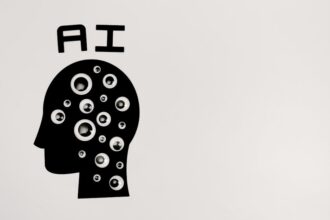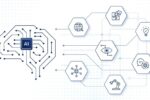As cyber threats evolve at unprecedented speed, organizations and individuals face new challenges from AI-powered attacks, quantum threats, and sophisticated ransomware. Discover the critical cybersecurity trends shaping 2025 and essential strategies to protect yourself.
The cybersecurity landscape in 2025 represents a perfect storm of emerging threats and technological disruption. Some 72% of respondents report an increase in organizational cyber risks, with ransomware remaining a top concern. Nearly 47% of organizations cite adversarial advances powered by generative AI (GenAI) as their primary concern, enabling more sophisticated and scalable attacks.
The cyber threat landscape in 2025 will be shaped by increasingly sophisticated attacks, with ransomware, social engineering and AI-powered cybercrime remaining top concerns, according to the World Economic Forum’s latest Global Cybersecurity Outlook. Data breaches continued at historic levels, while new threat vectors emerge from quantum computing advances and deepfake technology.
The stakes have never been higher. RaaS has been flagged by many experts as a focal point within the cyber security trends 2025, with cost of recovering from a ransomware attack now averaging USD 2.73 million, according to research data. As traditional security measures struggle to keep pace with evolving threats, organizations must adopt proactive, AI-enhanced security strategies to survive the digital battlefield of 2025.
The Rise of AI-Powered Cyberattacks
Generative AI Weaponization
“AI’s rapid emergence is creating new uncertainty, not only in how attackers operate but also in how defenders must respond. At the same time, ransomware remains a persistent and costly threat. As organizations race to implement AI-powered tools, it is critical they also do not lose sight of fundamental security principles,” warns cybersecurity experts.
Advanced Phishing and Social Engineering: Cybercriminals are leveraging generative AI to create highly convincing phishing emails, fake websites, and social engineering campaigns. AI tools can now generate personalized attack vectors based on publicly available information from social media, professional networks, and data breaches. These attacks are becoming indistinguishable from legitimate communications, dramatically increasing success rates.
Automated Vulnerability Discovery: AI-powered tools enable attackers to automatically scan for and exploit vulnerabilities across massive digital infrastructures. Machine learning algorithms can identify zero-day vulnerabilities faster than human security researchers, creating a significant advantage for cybercriminals.
Adaptive Malware: Next-generation malware uses AI to adapt its behavior in real-time, evading traditional signature-based detection systems. These intelligent threats can modify their code, change communication patterns, and adjust attack strategies based on the target environment’s security measures.
Deepfake Technology Threats
Deepfake technology is becoming more accessible and sophisticated, creating new vectors for cybercrime:
CEO Fraud and Business Email Compromise: Attackers use deepfake audio and video to impersonate executives, authorizing fraudulent wire transfers or sensitive data access. These attacks exploit human trust in visual and audio confirmation, bypassing traditional verification processes.
Identity Theft and Social Engineering: Deepfake technology enables sophisticated identity theft schemes where criminals can create convincing video calls or voice messages to manipulate victims into revealing sensitive information or performing unauthorized actions.
Misinformation Campaigns: Nation-state actors and cybercriminal organizations use deepfakes to spread misinformation, manipulate public opinion, and destabilize organizations or governments.
Quantum Computing: The Encryption Apocalypse
The Quantum Threat Timeline
Quantum Computing Cybersecurity is the safeguarding of digital information, encryption techniques, and sensitive data against potential vulnerability by quantum computers. It can break many current encryption methods, such as RSA and ECC, in seconds, putting sensitive data, secure communications, and digital infrastructure at unprecedented risk.
While practical quantum computers capable of breaking current encryption aren’t yet widely available, the threat is real and imminent. Security experts estimate that quantum computers powerful enough to break RSA-2048 encryption could emerge within the next 5-10 years, making current preparation efforts critical.
Post-Quantum Cryptography Implementation
Industry Response: In telecommunications, Vodafone revealed in March 2025 that it is trialing new quantum-safe technology, designed to protect smartphone users from future quantum-enabled attacks while browsing the internet. The technology is being supported by cybersecurity firm Akamai.
By mid-2025, organizations will be able to protect any protocol, not just HTTPS, by tunneling it through Cloudflare’s Zero Trust platform with post quantum cryptography, thus providing quantum safety as traffic travels across the Internet from the end-user’s device to the corporate office/data center.
Critical Implementation Areas:
- Government and defense systems requiring immediate quantum-resistant protection
- Financial services protecting transaction data and customer information
- Healthcare organizations safeguarding patient records and medical devices
- Critical infrastructure including power grids, transportation systems, and communications networks
Quantum-Safe Security Strategies
Crypto-Agility: We need to arm ourselves with quantum safe encryption and crypto-agility to rapidly adapt encryption methods as threats evolve. Organizations must design systems capable of quickly switching between cryptographic algorithms without requiring complete infrastructure overhauls.
Hybrid Cryptographic Approaches: Leading security organizations recommend implementing hybrid systems combining current encryption methods with quantum-resistant algorithms, providing defense-in-depth protection during the transition period.
Ransomware Evolution: Double and Triple Extortion
Ransomware-as-a-Service (RaaS) Proliferation
From ransomware attacks that now use “double extortion” tactics to the rise of AI-driven cyberattacks that can adapt and bypass traditional defenses, the stakes have never been higher. The increasing reliance on third-party vendors has made supply chains a key target for hackers, creating cascading vulnerability across interconnected business ecosystems.
Double Extortion Tactics: Modern ransomware operations don’t just encrypt data—they steal sensitive information before encryption and threaten public release if ransom demands aren’t met. This approach increases pressure on victims while creating additional revenue streams for criminals.
Triple Extortion Expansion: Advanced ransomware groups now target customers, partners, and stakeholders of infected organizations, threatening to release their data if the primary victim doesn’t pay. This strategy maximizes pressure while spreading the impact across entire business networks.
Industry-Specific Targeting
Healthcare Systems: Hospitals and healthcare providers face sophisticated attacks designed to disrupt critical patient care systems. Attackers understand that healthcare organizations often pay ransoms quickly to restore life-saving services.
Critical Infrastructure: Power grids, water systems, and transportation networks become prime targets for nation-state actors and sophisticated criminal organizations seeking maximum disruption and leverage.
Educational Institutions: Schools and universities represent attractive targets due to limited security budgets, valuable research data, and extensive personal information databases.
Zero Trust Architecture: The New Security Paradigm
Moving Beyond Perimeter Security
Implement a zero-trust framework that includes continuous authentication, least-privilege access, and network micro-segmentation. Reinforce these measures with security awareness training to create comprehensive protection against modern threats.
Core Zero Trust Principles:
- Never Trust, Always Verify: Every user and device must authenticate and authorize access for each resource request
- Least Privilege Access: Users receive minimum access rights necessary to perform their functions
- Assume Breach: Security architecture assumes that threats have already penetrated the perimeter
- Continuous Monitoring: Real-time analysis of user behavior and network traffic to detect anomalies
Implementation Strategies
Identity and Access Management (IAM): Advanced IAM systems use multi-factor authentication, behavioral analytics, and risk-based access controls to verify user identity and authorize appropriate access levels.
Network Micro-Segmentation: Organizations divide networks into small, isolated segments to prevent lateral movement during security breaches. This approach contains threats and limits potential damage from successful attacks.
Device Security and Endpoint Protection: Every device connecting to corporate networks requires verification, security compliance checking, and continuous monitoring for threat indicators.
Cloud Security Challenges
Multi-Cloud and Hybrid Infrastructure Risks
Complexity Management: Organizations using multiple cloud providers face increased complexity in maintaining consistent security policies, monitoring capabilities, and incident response procedures across diverse platforms.
Shared Responsibility Confusion: Many organizations struggle to understand the division of security responsibilities between cloud providers and customers, leading to security gaps and misconfigurations.
Data Sovereignty and Compliance: Regulatory requirements for data location, processing, and protection become more complex in multi-cloud environments, requiring sophisticated governance frameworks.
Container and Kubernetes Security
Supply Chain Vulnerabilities: Container images may contain vulnerabilities or malicious code introduced during the development process. Organizations must implement comprehensive scanning and verification processes for all container components.
Runtime Security: Dynamic container environments require real-time monitoring and threat detection capabilities to identify malicious activities during execution.
Configuration Management: Misconfigured Kubernetes clusters represent significant security risks, requiring automated policy enforcement and continuous compliance monitoring.
Supply Chain Attacks: The Interconnected Threat
Third-Party Vendor Risks
Modern organizations rely on extensive networks of third-party vendors, each representing potential entry points for sophisticated attackers. Supply chain attacks target these relationships to gain access to primary targets through trusted partnerships.
Software Supply Chain Compromises: Attackers infiltrate software development processes to insert malicious code into widely-used applications, libraries, and updates. These attacks can affect thousands of organizations simultaneously through legitimate software distribution channels.
Hardware Supply Chain Threats: Nation-state actors may compromise hardware manufacturing processes to insert backdoors, surveillance capabilities, or vulnerability exploitation tools into devices before they reach end users.
Vendor Risk Management
Comprehensive Due Diligence: Organizations must thoroughly evaluate the security practices of all vendors, including their cybersecurity policies, incident response capabilities, and historical security performance.
Continuous Monitoring: Real-time monitoring of vendor security posture through automated tools, security questionnaires, and third-party risk assessment platforms helps identify emerging vulnerabilities.
Contractual Security Requirements: Vendor agreements should include specific security requirements, incident notification obligations, and liability allocation for security breaches affecting customer data.
IoT and Edge Computing Security
Expanding Attack Surfaces
The proliferation of Internet of Things (IoT) devices and edge computing infrastructure creates massive new attack surfaces for cybercriminals to exploit:
Device Vulnerabilities: Many IoT devices lack robust security features, regular security updates, or strong authentication mechanisms, making them attractive targets for attackers seeking network access.
Edge Infrastructure Risks: Distributed edge computing nodes often operate with limited physical security and reduced monitoring capabilities compared to centralized data centers.
IoT Security Best Practices
Device Lifecycle Management: Organizations must implement comprehensive strategies for securing IoT devices throughout their operational lifecycle, including initial configuration, ongoing updates, and secure decommissioning.
Network Segmentation: IoT devices should operate on isolated network segments to prevent potential compromises from affecting critical business systems.
Behavioral Monitoring: AI-powered monitoring systems can detect anomalous behavior from IoT devices, identifying potential compromises or misuse patterns.
Practical Protection Strategies for 2025
Individual Protection Measures
Advanced Authentication:
- Implement multi-factor authentication on all accounts, prioritizing hardware-based security keys
- Use unique, complex passwords generated by reputable password managers
- Enable biometric authentication where available and appropriate
Personal Data Protection:
- Regularly review and minimize personal information shared on social media platforms
- Use privacy-focused browsers, search engines, and communication tools
- Implement end-to-end encryption for sensitive communications
Financial Security:
- Monitor financial accounts regularly for unauthorized transactions
- Use virtual credit card numbers for online purchases when possible
- Enable real-time transaction alerts and spending limits
Device Security:
- Keep all devices updated with latest security patches and software versions
- Use reputable antivirus software with real-time protection capabilities
- Avoid connecting personal devices to unsecured public Wi-Fi networks
Organizational Protection Strategies
Security Awareness Training: Regular, updated training programs help employees recognize and respond appropriately to emerging threats including AI-generated phishing attempts, deepfake communications, and social engineering tactics.
Incident Response Planning: Organizations must develop and regularly test comprehensive incident response plans that address modern threat scenarios including ransomware attacks, supply chain compromises, and AI-powered threats.
Backup and Recovery: As such, offline backups and segmented networks become necessary resilience strategies for protecting against ransomware and data destruction attacks.
Continuous Security Assessment: Regular penetration testing, vulnerability assessments, and security audits help identify weaknesses before attackers can exploit them.
Technology Investment Priorities
AI-Powered Security Tools:
- Behavioral analytics platforms that detect anomalous user and system behavior
- Automated threat hunting and incident response capabilities
- AI-enhanced email security and anti-phishing solutions
Identity and Access Management:
- Zero-trust identity verification systems
- Privileged access management solutions
- Risk-based authentication platforms
Data Protection:
- Advanced encryption solutions including post-quantum cryptography preparation
- Data loss prevention systems with AI-enhanced classification
- Secure backup and disaster recovery solutions
Regulatory and Compliance Evolution
Emerging Privacy Regulations
Governments worldwide are implementing stricter data protection regulations that significantly impact cybersecurity strategies:
Cross-Border Data Transfer Requirements: Organizations operating internationally must navigate complex requirements for data localization, cross-border transfer restrictions, and sovereignty compliance.
Breach Notification Obligations: Expanding requirements for rapid breach notification to regulators, customers, and affected individuals create new compliance challenges and potential liability exposure.
AI and Algorithm Transparency: New regulations governing AI system transparency, bias prevention, and algorithmic accountability affect how organizations implement AI-powered security tools.
Industry-Specific Compliance
Financial Services: Enhanced requirements for operational resilience, third-party risk management, and cyber threat intelligence sharing create new compliance obligations for financial institutions.
Healthcare: Expanded patient data protection requirements, medical device security standards, and telehealth privacy regulations affect healthcare organizations’ cybersecurity strategies.
Critical Infrastructure: Government mandates for cybersecurity standards, incident reporting, and threat information sharing affect organizations operating critical infrastructure systems.
The Future of Cybersecurity: 2025 and Beyond
Emerging Technologies and Trends
Quantum-Safe Cryptography Adoption: Organizations will accelerate implementation of quantum-resistant encryption methods as quantum computing capabilities advance and become more accessible.
AI-Driven Security Operations: Security operations centers will increasingly rely on AI and machine learning to detect threats, automate responses, and predict attack patterns with minimal human intervention.
Integrated Security Ecosystems: Security tools will become more integrated and automated, sharing threat intelligence and coordinating responses across different platforms and vendors.
Skills and Workforce Development
Cybersecurity Talent Shortage: The cybersecurity industry faces a critical shortage of skilled professionals, requiring innovative approaches to training, education, and retention.
AI and Automation Impact: While AI tools enhance security capabilities, they also change required skill sets and job functions within cybersecurity teams.
Continuous Learning Requirements: Cybersecurity professionals must continuously update their skills and knowledge to address rapidly evolving threats and technologies.
Conclusion: Building Resilient Security for 2025
The cybersecurity landscape of 2025 presents unprecedented challenges requiring proactive, multi-layered defense strategies. AI-powered attacks, geopolitical tensions, and sophisticated cyber crime attacks are just a few of the challenges organizations will face in the coming year.
Success in this environment requires:
Adaptive Security Strategies: Organizations must implement flexible security architectures capable of evolving with emerging threats and technologies.
Human-Centric Security: Despite technological advances, human awareness, training, and decision-making remain critical components of effective cybersecurity programs.
Collaborative Defense: Sharing threat intelligence, best practices, and incident response capabilities across industries and organizations enhances collective security resilience.
Continuous Investment: Cybersecurity requires ongoing investment in technology, training, and expertise to maintain effectiveness against evolving threats.
As chief security officers across industries brace for another year of escalating digital threats, the consensus from experts points to a pivotal shift in 2025: the mainstream adoption of artificial intelligence not just as a defensive tool, but as a double-edged sword wielded by adversaries.
The organizations and individuals who recognize these challenges and take proactive steps to address them will be best positioned to navigate the complex cybersecurity landscape of 2025 and beyond. The future of cybersecurity isn’t just about deploying the latest technologies—it’s about building comprehensive, adaptive, and human-centered security programs capable of protecting against threats we can anticipate and those we haven’t yet imagined.
The time for reactive cybersecurity approaches has passed. In 2025, survival requires proactive, intelligence-driven security strategies that leverage the best of human expertise and technological innovation to stay ahead of increasingly sophisticated adversaries.
For the latest cybersecurity threat intelligence, visit CISA Cybersecurity & Infrastructure Security Agency, explore industry insights at SANS Institute, and follow research developments through Cybersecurity & Infrastructure Security Agency. Stay informed about emerging threats through The MITRE Corporation.








